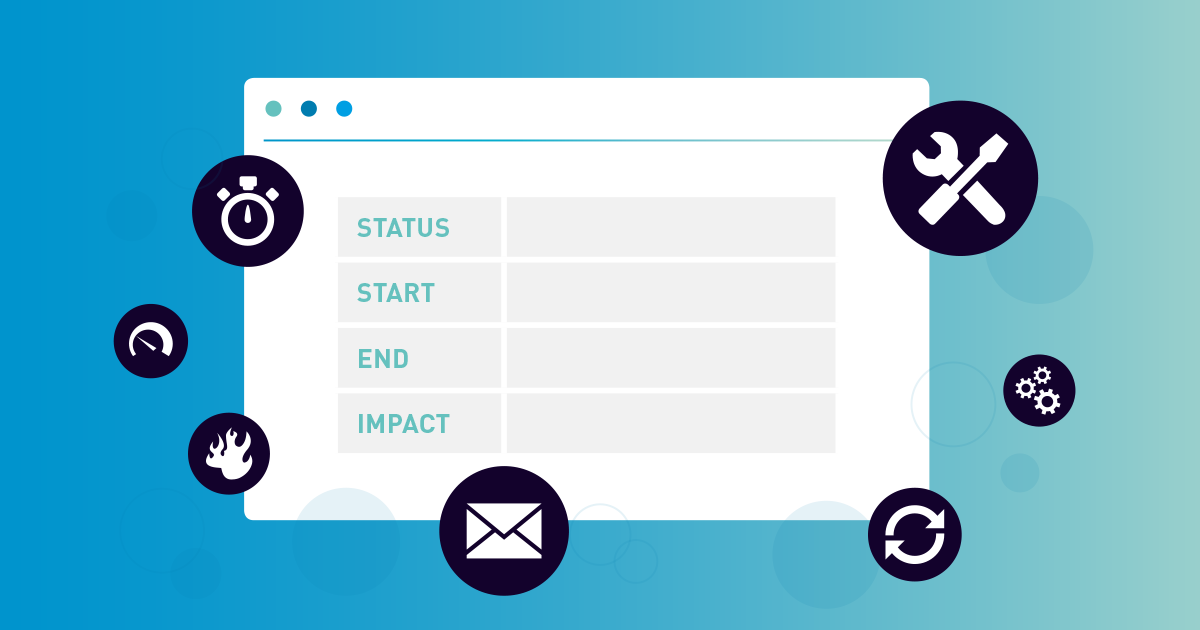In any job, good communication skills can help you be even better at what you do. Because — unless you're working as a game ranger in the middle of the Okavanga Delta — you need to interact with other humans. And the better you do that, the more you can achieve. The same applies for system administration. Here at Paessler, we're all about helping system administrators, and so I decided to put together some communication tips to help get you through the day. Plus: Email templates!
1. Figure Out What They Need/Want to Know
Filter information for your users. Not everyone in the organization needs to know all the technical details of the IT infrastructure. Truth is, just like most people don't care about how electricity works, most users don't care about what's going on behind the scenes in IT. But by the same token, key decision makers or project managers may need more technical information to inform their strategies.
It's up to you to understand how much detail to communicate. The rule of thumb is that it's best to provide just the right amount of information for your audience: not too much, and not too little. To do this implies that you must understand your audience. Figure out exactly what they need to know for them to do their jobs or make decisions.
2. Cut Out the Jargon
Following on from the last point, you can further filter your communication by removing IT jargon. Yes, you just configured an SNMP trap to monitor network traffic. Good work! But aside from the most tech savvy people, users will probably not know (or care) what SNMP or a trap is. If you try and explain it to them using these words, you'll probably see their eyes glaze over within seconds.
So when communicating, try to translate the jargon into functionality that everyone will understand. For example: "I just configured an SNMP trap" becomes "I am measuring network traffic to monitor the speed of the network".
Keep in mind, too, that "jargon" doesn't just mean acronyms. It also covers IT-specific terms that might confuse the layperson.
3. Make Your Users Feel Comfortable
By this, I don't mean invest in a comfortable sofa with extra plush cushions for your users to lounge on when they visit your IT office (although, if you're thinking along these lines, why the hell not, right?). What I mean is put them at ease. Technology that is second-nature for system administrators might be truly daunting subjects for users. And it's easy to forget how intimidating it can be navigating a field where you have very little knowledge.
Users who are uncomfortable about coming across as "stupid" might not ask questions, or worse, might say they understand something when they actually don't. This can have disastrous consequences.
Maintain an open way of dealing with questions. Be prepared to explain the same concept multiple times to the same person, preferably in different ways. Make sure that they have understood. And try to make them feel like all questions are acceptable. After all, you're the one paid to know this stuff, not them.
Of course, if all this seems like a bit much, just buy the sofa.
4. Upper Management is Different
 The types higher up on the corporate food chain tick a bit differently to the "common folk". The main variable is time: they generally don't have it. You need to adapt your communication accordingly. This means preparing your message thoroughly, and anticipating potential questions. Focus on the things that matter to them: in other words, how does your idea, issue, or solution impact them and their job? Identify the key points you need to make and make them as quickly as possible.
The types higher up on the corporate food chain tick a bit differently to the "common folk". The main variable is time: they generally don't have it. You need to adapt your communication accordingly. This means preparing your message thoroughly, and anticipating potential questions. Focus on the things that matter to them: in other words, how does your idea, issue, or solution impact them and their job? Identify the key points you need to make and make them as quickly as possible.
When dealing with upper management, it's also a good idea to have an elevator pitch prepared. That way, if a meeting overruns or you only get a few minutes to discuss the issue with the manager, you have a condensed version ready that covers only the most fundamental facts, issues, and arguments.
5. Filter Incoming Communication, Too
IT is similar to air travel: no one really cares until something crashes. Sadly this means you will rarely ever hear compliments or positive affirmations when everything is humming along smoothly. You'll mostly only hear about when things are slow or down. That is just the nature of the job. Once you understand this, then you won't take the constant negativity too badly.
What you need to do is filter incoming feedback. Take the most important information you get to understand where problems are, and ignore the rest.
6. Actively Seek Out Feedback
Keeping in mind the previous point, there is still a lot that can be learnt from user feedback. Communication is, after all, a two-way street. Keeping the lines open to users at all levels of the organization will give you more insight into your role than you might think.
Survey users about how systems can be improved, ask management how you did on the last project, and so on. Look for information that can help you do a better job. There is no network that cannot be optimized further, and there is no system administrator that cannot improve themselves further.
7. Timely and Transparent Communication
Communicate openly, honestly, and in a timely way. If you have noticed a system has crashed, immediately communicate it and let your users know what you know (and don't yet know). For scheduled downtime, like server upgrades or software updates, let users know well enough in advance and give them the reasons for it (for tips on communicating downtime, read this blog post). After a crisis, be clear about what the problem was, and how it can be prevented in the future.
The clearer and more upfront you are, the more you will gain the trust and respect of your users.
Bonus: Email Templates
 Although every company and organization is different, there are some communication tasks that every system administrator needs to do, like communicating planned and unplanned downtime, communicating new security risks, and so on. We have put together some examples of emails to cover these scenarios. We also packed in some additional communication advice, too! Just click here or the banner below to get your email template pack.
Although every company and organization is different, there are some communication tasks that every system administrator needs to do, like communicating planned and unplanned downtime, communicating new security risks, and so on. We have put together some examples of emails to cover these scenarios. We also packed in some additional communication advice, too! Just click here or the banner below to get your email template pack.
What communication advice do you have from your experience as an IT professional? Any tips or golden rules you've learnt? Let us know in the comments below!
 Published by
Published by 




.jpg)






